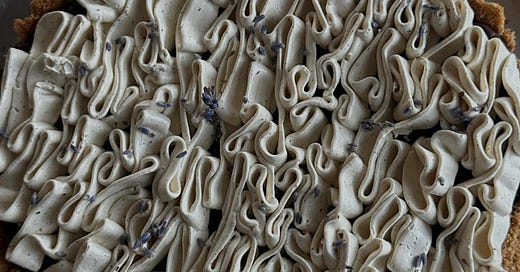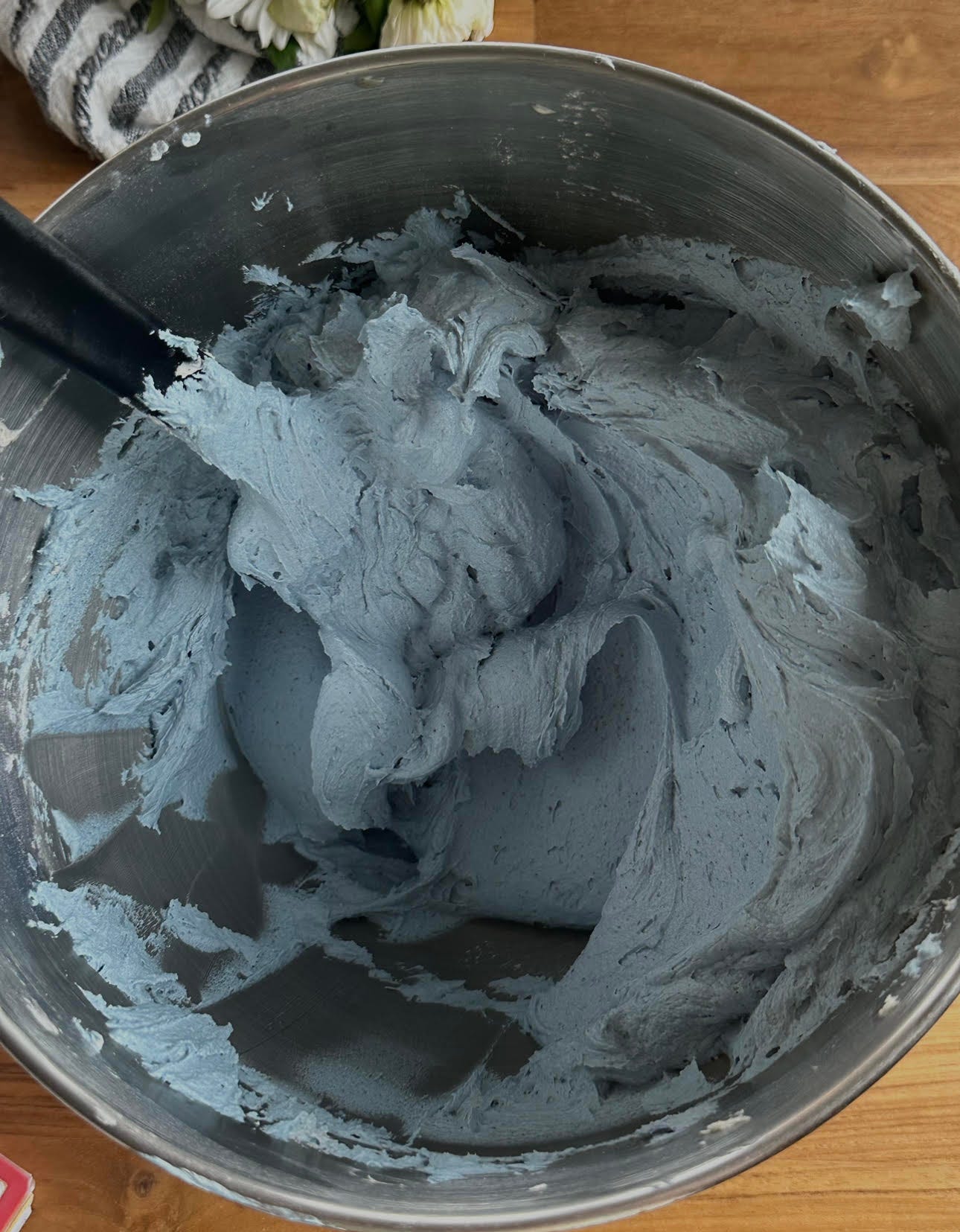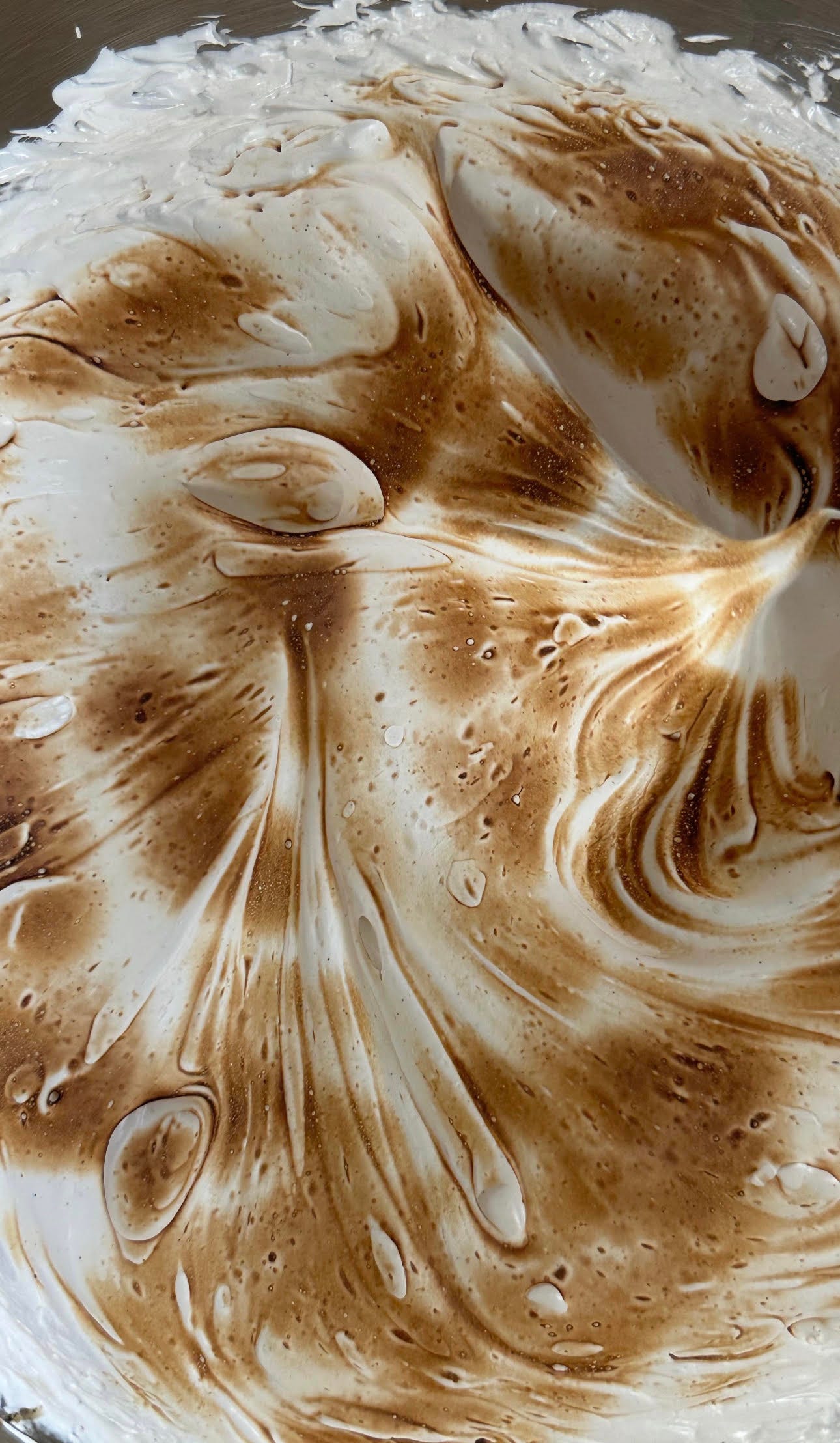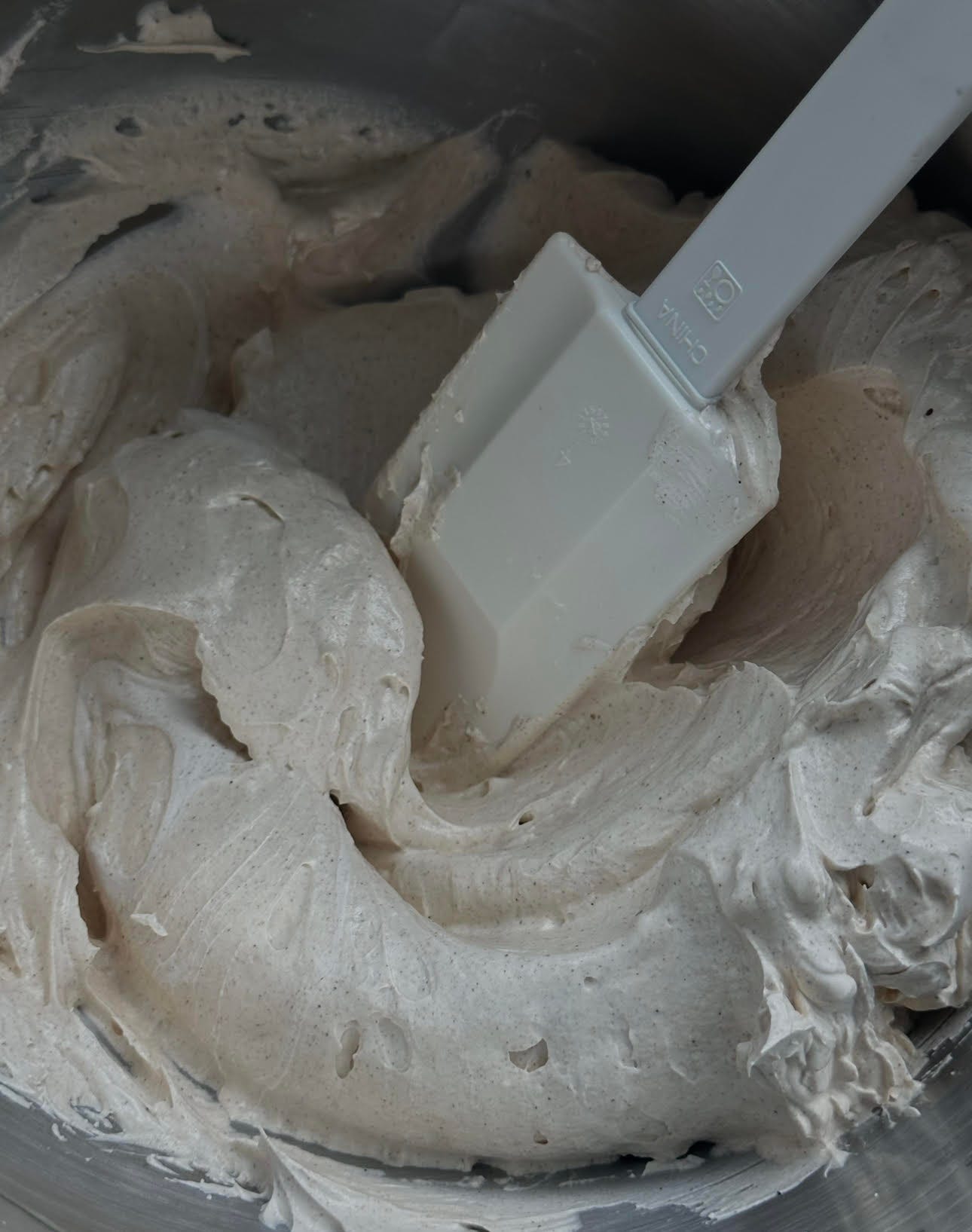Buttercream Bible: American, Swiss, & Italian Buttercreams
My personal Holy Trinity of buttercreams! Here you will find a description of the three types, how to determine which to use, and my current recipes for each. Happy frosting!
Buttercreams are one of the largest categories of frostings in both home and professional baking. There are 7 major types of buttercreams: American, Swiss, Italian, Russian, Ermine, French, and German. Each of these buttercreams varies in texture, flavor, sugar content, fat content, stability, and difficulty, utilizing different fat:sugar ratios and techniques to achieve the final result.
While I’ve made each of the Big 7 Buttercreams for testing purposes, I have only returned to the American, Swiss, and Italian buttercreams; Swiss being my absolute favorite. Below are my recipes for each and the tips I use to achieve the perfect result every time.
American Buttercream
American buttercream is the sweetest and simplest variation of the three. This variation, at its base, is comprised of only room temperature butter and powdered sugar. These two ingredients are beat together until a thick and fluffy frosting appears, with the texture adjusted using a little heavy cream. This frosting is easy to manipulate, flavor, color, and is overall relatively unfussy. American buttercream is not suitable for high temperatures but is very stable at room temp or refrigerated. American buttercream is a “crusting” buttercream, meaning that as it sits, a crust forms on the top layer while it remains fluffy underneath.
I use American buttercream in applications where my baked good itself is not too sweet or complicated. Thus type of frosting is perfect for my Cabernet Buttercream as the Cabernet added a tanginess balanced out by the high sugar content. If you are just beginning your baking journey, I implore you to master American buttercream before any other!
American Buttercream
Ingredients:
1 cup (225g) softened butter or vegan butter
4 cups powdered sugar, sifted
2-3 tablespoons heavy cream, whole milk, or dairy-free milk
1 tablespoon vanilla extract
Pinch of fine sea salt
Method:
In a large mixing bowl, using either a stand mixer or a hand mixer, beat the softened butter until light and fluffy (1-3 minutes).
Add half of the powdered sugar and beat on low speed until incorporated before turning up the speed and beating on high until combined. Repeat with the rest of the powdered sugar.
Assess the thickness of the buttercream and adjust with the heavy cream/milk/dairy free milk, one tablespoon at a time until desired consistency is achieved. If you add too much liquid, add more powdered sugar, one tablespoon at a time, to thicken.
After you are satisfied with the viscosity of your buttercream, add the salt, vanilla or any other colorings or flavorings.
Use immediately or refrigerate for up to 5 days before use (you will need to bring the buttercream back to room temperature and re-beat before decorating if it was made in advance).
Swiss Meringue Buttercream
Swiss meringue buttercream is my personal gold standard for buttercreams. It is light, fluffy, not too sweet, stable, perfectly buttery, and easily flavored. This buttercream takes a bit more time and technique than its American counterpart, but is it well worth the energy. Swiss meringue buttercream is essentially egg whites, granulated sugar, and butter. The egg whites and sugar are gently cooked over a bain marie (water bath), until dissolved, then whipped until cooled. Softened butter is then slowly added until a glossy, perfect frosting appears. This buttercream is extremely stable in room temperature and refrigerated conditions, and does not crust at all. It does solidify significantly when refrigerated. Temperatures are very important to the success of this buttercream, so any miscalculation in ingredient temperature could derail the entire process. Concurrently, ingredient amounts are also imperative for success. All ingredients are weighed in grams for this recipe.
Swiss meringue buttercream is my go-to for every cake I bake. I prefer to make this buttercream day of, as it can be a little temperamental when re-beating after being made in advance. I use this buttercream more than any other and am confident that after you try it, you will feel the same!
Swiss Meringue Buttercream
Ingredients:
100g egg whites (not from a carton, I’ve tried!)
185g granulated sugar
250g (very) softened butter, cut into small chunks
Pinch of salt
1 tablespoon vanilla extract or vanilla bean paste
Method:
In the bowl of your stand mixer or a heat proof mixing bowl, add the egg whites and sugar. Whisk until combined.
Place this bowl over a bain marie (pot of boiling water, bottom of the bowl should not touch the water), and whisk continuously. The mixture will become lighter and paler as the sugar dissolves. After about 3-4 minutes of continuous whisking over the bain marie, rub a bit of the egg white mixture between your fingers. You should not feel any sugar crystals. If the mixture is completely smooth, remove from heat immediately. If you feel a bit of graininess, continue whisking over the heat, retesting every minute with your fingers until the sugar is entirely dissolved.
After removal from the heat, begin beating with either your stand or hand mixture (whisk attachment) on high speed until the bowl is room temperature to the touch (if the bowl is too hot, the butter will melt). This will take about 10 minutes. The meringue will become white, silky, and doubled in size.
Once the bowl has cooled and the meringue is looking glossy and fluffy, add the butter, one small chunk at a time with the mixer still beating on high speed. Add the butter at increments of about 15 seconds. The frosting will deflate and look a but chunky during the addition of the butter, this is entirely normal. Once all of the butter has been added, add the salt, vanilla, and continue beating until fluffy and homogenous.
Turn the speed to low and beat for an additional 2-4 minutes. This knocks out the big air bubbles and creates a smoother finished product. You can also mix with a spatula for a similar effect.
Use or refrigerate immediately. If making in advance, allow the buttercream to come to room temperature before re-beating. Sometimes curdling can occur when re-beating if temperatures are off.
Italian Meringue Buttercream
Italian meringue buttercream, like Swiss, is a meringue (egg whites and sugar) with softened butter. The difference here, however, is that instead of the sugar and egg whites being cooked together and then whipped, molten (240 F to be exact) sugar syrup is poured carefully into whipped egg whites, cooking them. The utilization of sugar syrup requires a candy thermometer and a bit more time and skill, making Italian meringue buttercream the most difficult of the three.
Italian meringue buttercream is also the most stable and least sweet of the three buttercreams, making it perfect for elaborate decorating and sitting for long periods without refrigeration. Like the other buttercreams, it is easiest to make this day of but it can be made prior, brought to room temp, and then re whipped before using. My favorite version of this buttercream is replacing the sugar syrup with honey to create a stable buttercream with a caramelized honey note.
Italian Meringue Buttercream
Ingredients:
165g egg whites, room temperature (not from a carton!)
400g granulated sugar, divided in half
2/3 cup water
454g butter, softened, cut into small chunks
1/4 teaspoon cream of tartar
Pinch of salt
1 tablespoon vanilla extract or vanilla bean paste
Method:
In a small saucepan over medium high heat, combine the water and 200g of sugar. Bring this mixture to a boil while using a wet pastry brush to wash down the sides of the saucepan to incorporate any loose sugar crystals. Once boiling, reduce the heat to medium and attach a candy thermometer. Do not stir the syrup but allow it to cook until it reached 240F (about 7 minutes).
Meanwhile, in the bowl of a stand mixer, add the egg whites and cream of tartar. Begin whisking on high speed until soft peaks. Once soft peaks have been achieved, slowly sprinkle in the remaining sugar until fully incorporated. Continue beating until stiff peaks.
Once your meringue is at stiff peaks and your sugar syrup is at 240F, remove the sugar syrup from the heat and slowly pour into the meringue while the mixer is still on high. Pour the sugar syrup in a steady thin stream down the side of the bowl, avoiding the whisk directly for safety reasons. Once the entirely of the sugar syrup has been incorporated, continue to beat the meringue until the bowl is room temperature to the touch (about 10 minutes).
Once the bowl has cooled to room temperature, add the butter, one chunk at a time, allowing about 15 seconds between each addition. The mixture will deflate with the addition of butter, this is normal.
After the butter has been completely combined, add the salt and vanilla. Continue to beat until glossy and fluffy.
Turn the speed to low and beat for an additional 2-4 minutes. This knocks out the big air bubbles and creates a smoother finished product. You can also mix with a spatula for a similar effect.
Use or refrigerate immediately. If making in advance, allow the buttercream to come to room temperature before re-beating.








Hello! First of all, thank you for spending the time and energy writing and posting this!! You mention that your favorite Italian buttercream is made with honey, what would that look like? I assume you would follow the same steps, except swap the sugar and water with honey. But would you still only heat half?
Thanks again!! 🧡
Hi! I saw a cake you made with brown butter American buttercream. How do you make it? Do you just brown the butter for the American buttercream recipe and wait for it to solidify again?